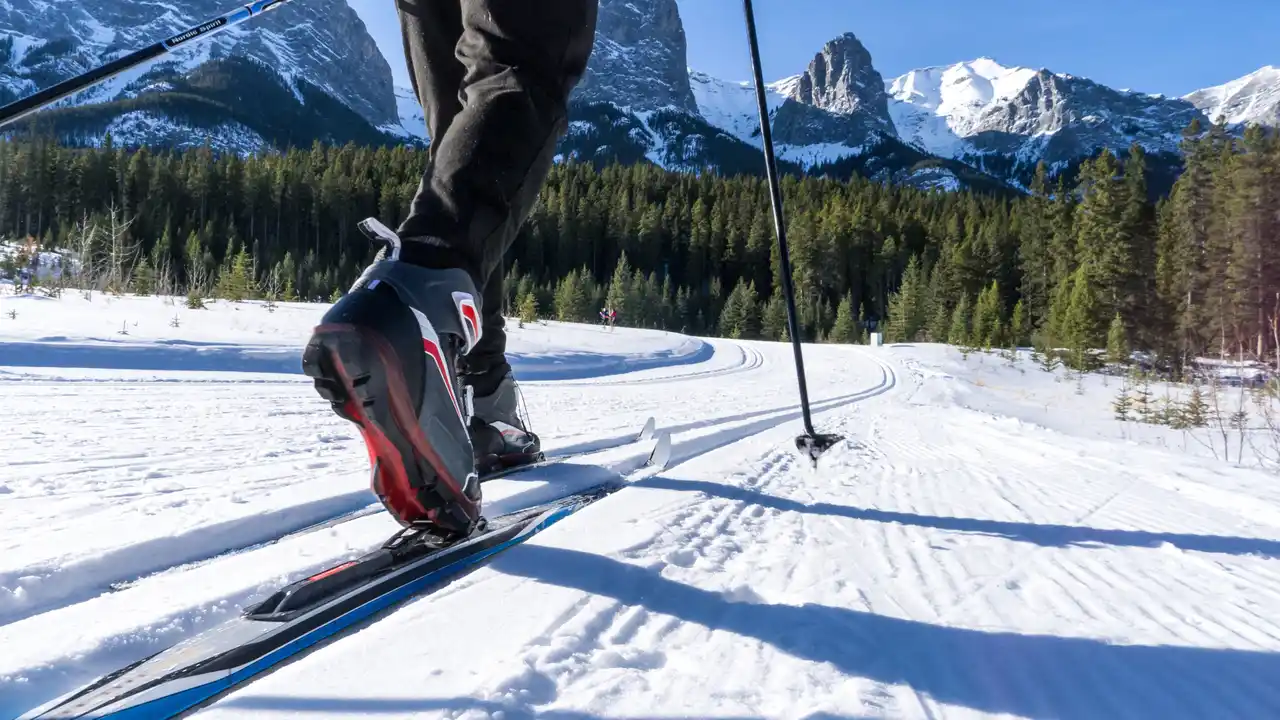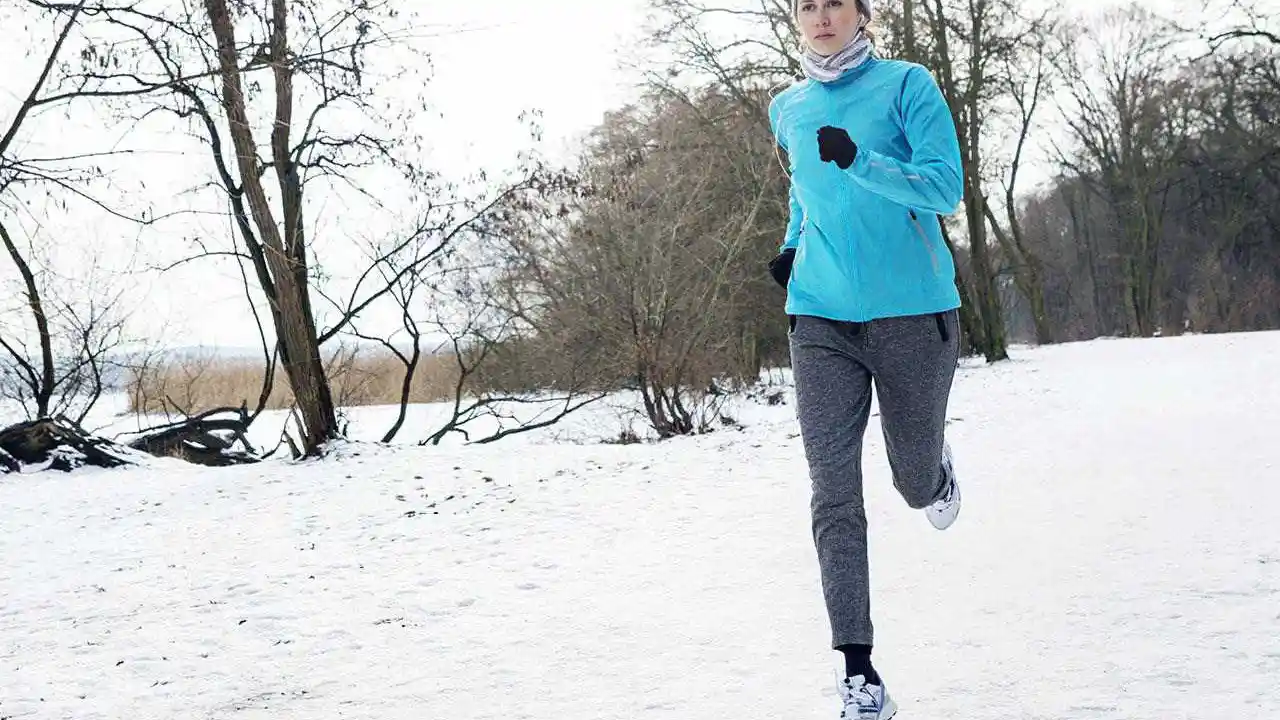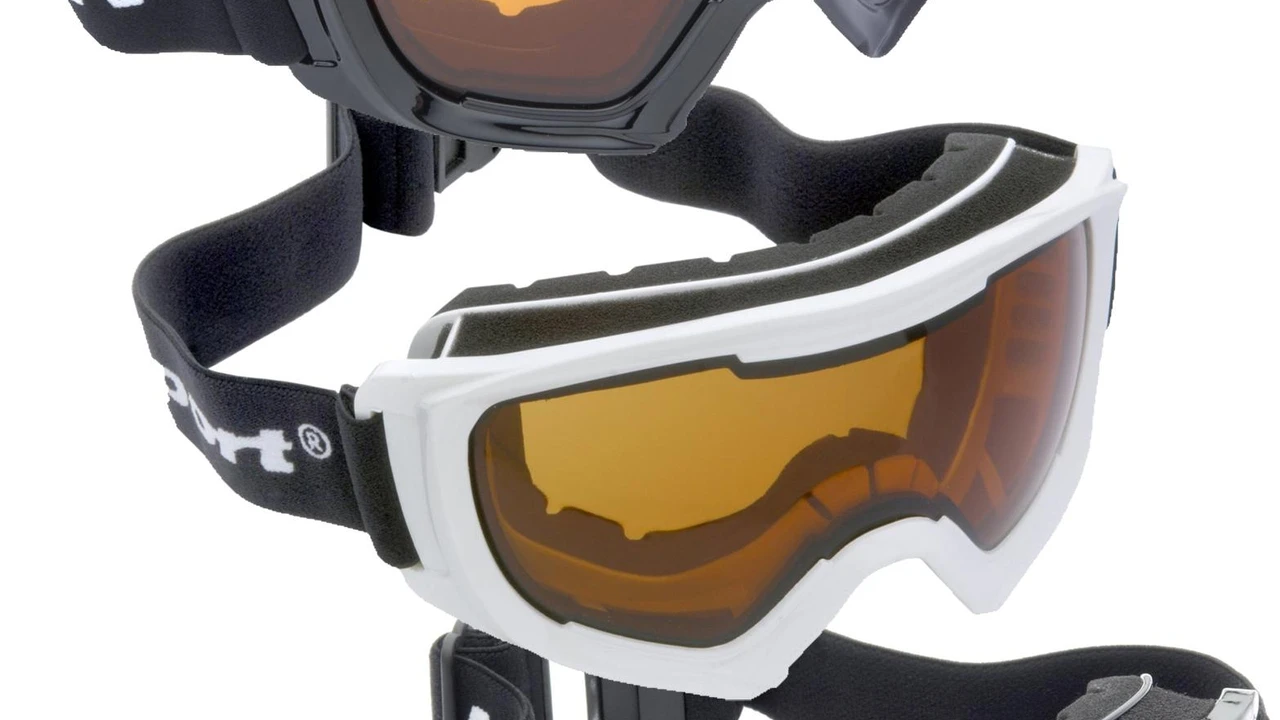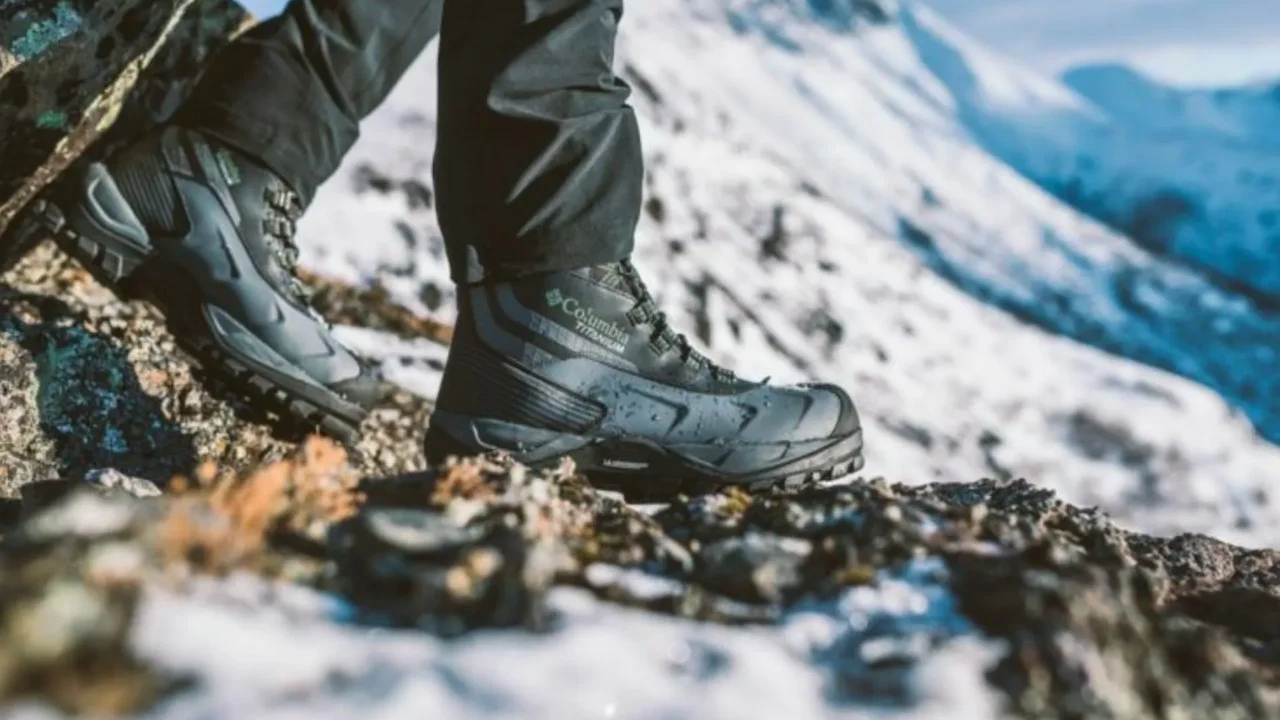
Master cross country skiing with essential techniques for beginners. Glide through snow-covered landscapes with ease.
Cross Country Skiing Techniques for Beginners and Beyond
Cross country skiing, often called Nordic skiing, is a fantastic way to experience winter landscapes, get a full-body workout, and enjoy the tranquility of nature. Unlike downhill skiing, cross country skiing involves gliding across relatively flat or gently rolling terrain, making it accessible to a wide range of ages and fitness levels. Whether you're looking for a peaceful glide through a snowy forest or a challenging aerobic workout, mastering the fundamental techniques will unlock a world of winter adventure. This comprehensive guide will walk you through everything from basic movements to advanced tips, including gear recommendations and comparisons to help you choose the right equipment for your journey.
Understanding Cross Country Skiing Basics Gear and Setup
Before you even think about gliding, understanding your equipment is key. Cross country skis are much narrower and lighter than downhill skis, designed for efficiency on varied terrain. The boots attach to the bindings only at the toe, allowing the heel to lift freely, which is crucial for the gliding motion.
Ski Types Classic Skate and Backcountry
- Classic Skis: These are designed for groomed tracks or relatively flat, untracked snow. They have a 'kick zone' underfoot that provides grip for propulsion, often achieved with wax or a 'fish scale' pattern.
- Skate Skis: Shorter and stiffer than classic skis, skate skis are used on wide, groomed trails with a skating motion similar to ice skating. They require a different technique and are generally faster.
- Backcountry Skis: Wider and more robust, these are for ungroomed, deeper snow, often in more remote areas. They offer better flotation and stability but are slower.
Boot and Binding Systems NNN SNS and Prolink
The boot and binding system is critical for power transfer and control. The three main systems are:
- NNN (New Nordic Norm): Features two narrow ridges on the boot sole that fit into corresponding grooves on the binding. Widely used and offers good control.
- SNS (Salomon Nordic System): Has one wide ridge on the boot sole. Less common now but still found on older equipment.
- Prolink: Salomon's answer to NNN, offering NNN compatibility with a slightly different feel.
Product Recommendation: For beginners, a classic ski package is highly recommended. Look for a 'waxless' ski with a fish-scale pattern for easy maintenance. A good starting point would be the Fischer Spider 62 Crown/Easy Skin Xtralite (MSRP: $350-450 for skis only). These are versatile, stable, and great for learning. Pair them with Rossignol X-1 FW NNN Boots (MSRP: $100-130) and Rottefella Basic NNN Bindings (MSRP: $50-70). This setup provides a comfortable and forgiving experience for new skiers.
Essential Cross Country Skiing Techniques The Fundamentals
Once you have your gear, it's time to learn how to move. The beauty of cross country skiing is its intuitive nature, but a few key techniques will make your experience much more enjoyable and efficient.
The Classic Diagonal Stride Propulsion and Glide
This is the bread and butter of classic cross country skiing. It mimics a natural walking or running motion.
- The Kick: Push off with one foot, pressing the entire ski base into the snow to engage the grip zone. This propels you forward.
- The Glide: As you kick, shift your weight onto the opposite ski, allowing it to glide smoothly forward.
- Arm Swing: Coordinate your arm swing with your leg movements – opposite arm and leg move together (e.g., right arm forward with left leg kick).
- Pole Plant: Plant your poles firmly in the snow for added propulsion and balance.
Tip: Focus on a long, smooth glide. Don't rush the kick. Think about pushing off from your toes and extending your leg fully.
Double Poling Speed and Efficiency
Used on flatter terrain or slight downhills, double poling is a powerful technique for maintaining momentum.
- Pole Plant: Plant both poles simultaneously in front of you, shoulder-width apart.
- Lean and Push: Lean forward and push down and back with your arms, engaging your core and upper body.
- Glide: Allow your skis to glide forward as you complete the pole push.
- Recovery: Bring your poles forward for the next push.
Tip: This is a full-body exercise. Engage your abdominal muscles and use your body weight to drive the poles.
Uphill Techniques Herringbone and Sidestep
Going uphill can be challenging, but these techniques make it manageable.
- Herringbone: For steeper inclines, point your ski tips outwards in a 'V' shape, creating a herringbone pattern. This provides maximum grip. Keep your knees bent and lean forward.
- Sidestep: For very steep or icy sections, turn your skis perpendicular to the slope and step sideways up the hill.
Downhill Control Snowplow and Telemark Turn
Controlling your speed and direction on downhills is crucial for safety and enjoyment.
- Snowplow (Wedge): The most basic way to control speed. Point your ski tips together in a 'pizza' shape, keeping your knees bent and weight forward. The wider the 'V', the more braking power.
- Telemark Turn (Basic): For gentle turns, initiate a slight snowplow, then shift your weight to the outside ski of the turn, dropping the inside knee forward. This is a foundational move for more advanced telemark skiing.
Advanced Cross Country Skiing Techniques Mastering the Trails
Once you're comfortable with the basics, you can start refining your technique and exploring more challenging terrain.
Skate Skiing V1 V2 and V2 Alternate
Skate skiing is faster and more dynamic, requiring groomed trails. The primary techniques are:
- V1 (Offset): Used for climbing or accelerating. One pole push per leg push, with an offset timing.
- V2 (One Skate): The most powerful and efficient technique for flats and gentle uphills. Two pole pushes per leg push.
- V2 Alternate (Two Skate): Similar to V2 but with a more continuous flow, often used for maintaining speed.
Product Recommendation: For those looking to try skate skiing, the Salomon S/LAB Carbon Skate Skis (MSRP: $600-800) are top-tier performance skis. Pair them with Salomon S/LAB Carbon Skate Boots (MSRP: $400-500) and Salomon Prolink Carbon SK Bindings (MSRP: $100-120). This setup is for serious skate skiers, offering maximum power transfer and lightness.
Turning Techniques Step Turn and Parallel Turn
- Step Turn: For gradual turns on flats or gentle downhills. Lift one ski and step it in the direction of the turn, then bring the other ski to match. Repeat until the turn is complete.
- Parallel Turn (Advanced): Similar to downhill skiing, used for faster descents. Involves carving a turn with both skis parallel, requiring good balance and edge control.
Falling and Getting Up Safely and Efficiently
Everyone falls! Knowing how to get up gracefully is part of the learning process.
- Remove Poles: First, get your poles out of the way.
- Skis Parallel: Position your skis parallel to each other and perpendicular to the slope (if on a hill).
- Push Up: Use your hands or poles to push yourself up, keeping your weight over your skis.
Cross Country Skiing Training and Conditioning Preparing Your Body
Cross country skiing is a demanding sport that uses almost every muscle group. Proper conditioning will enhance your performance and prevent injuries.
Strength Training Core and Upper Body Focus
Exercises like planks, push-ups, pull-ups, and rows will build the core and upper body strength essential for poling and balance.
Endurance Training Long Glides and Intervals
Cardiovascular fitness is key. Running, cycling, or even roller skiing (a summer training tool) can build the necessary endurance. Incorporate interval training to improve your speed and stamina.
Balance and Agility Drills Off-Snow Practice
Practice standing on one leg, using a balance board, or doing agility ladder drills to improve your balance and coordination, which are vital on skis.
Choosing the Right Cross Country Skiing Gear Detailed Product Comparisons
Selecting the right equipment can significantly impact your experience. Here's a deeper dive into product categories and comparisons.
Classic Ski Comparison Waxless vs Waxable
- Waxless Skis (Fish Scale/Crown Pattern):
- Pros: Easy to use, no waxing required for grip, great for beginners and recreational skiers.
- Cons: Can be slower in certain snow conditions, less glide than waxed skis, can be noisy on hard snow.
- Product Example: Atomic Savor 48 Skintec (MSRP: $280-350). These use a mohair skin insert for grip, offering better glide than fish scales and excellent performance in varying conditions.
- Waxable Skis:
- Pros: Superior glide and kick when waxed correctly, preferred by experienced skiers and racers.
- Cons: Requires knowledge of waxing for different snow temperatures and conditions, more maintenance.
- Product Example: Madshus Redline 3.0 Classic (MSRP: $700-900). A high-performance race ski requiring precise waxing for optimal results.
Skate Ski Comparison Stiffness and Length
- Stiffer Skis: Generally for heavier or more powerful skiers, offering better power transfer.
- Softer Skis: More forgiving, suitable for lighter skiers or those still developing technique.
- Length: Skate skis are typically chosen based on skier weight and height, with longer skis offering more glide and shorter skis being more maneuverable.
- Product Example (Mid-Range): Rossignol X-IUM Skating Premium S2 (MSRP: $500-650). A versatile skate ski suitable for a wide range of skiers, offering a good balance of stability and speed.
Cross Country Ski Boots Comfort and Performance
- Classic Boots: Softer flex in the forefoot to allow for the kick, often higher ankle support.
- Skate Boots: Stiffer sole and higher, more rigid cuff for ankle support, crucial for the skating motion.
- Combi Boots: A hybrid, offering a balance of classic flex and skate support, good for those who do both.
- Product Example (Beginner Classic): Fischer XC Comfort Pro (MSRP: $120-150). Focuses on warmth and comfort, great for long days on the trail.
- Product Example (Performance Skate): Alpina ECL 2.0 Skate Boots (MSRP: $300-400). Lightweight with excellent power transfer and a precise fit.
Poles Material and Length
- Aluminum Poles: Durable and affordable, good for beginners.
- Carbon Fiber Poles: Lighter and stiffer, offering better swing weight and power transfer, but more expensive and fragile.
- Length: For classic skiing, poles should reach your armpit. For skate skiing, they should reach between your chin and nose.
- Product Example (Beginner): Swix CT5 Poles (MSRP: $80-100). A good balance of durability and lightweight for recreational use.
- Product Example (Performance): Leki HRC Max Poles (MSRP: $200-250). Full carbon, extremely light and stiff for competitive skiers.
Cross Country Skiing Maintenance and Care Extending Your Gear's Life
Proper care of your equipment will ensure it performs well and lasts for many seasons.
Cleaning Your Skis Removing Dirt and Old Wax
After each use, wipe down your skis to remove dirt and snow. For waxable skis, regularly clean off old kick wax with a wax remover.
Waxing for Glide and Kick Optimizing Performance
For waxable skis, applying the correct glide wax (for tips and tails) and kick wax (for the kick zone) is crucial. This depends on snow temperature and conditions. Many online resources and local ski shops can guide you.
Storing Your Gear Off-Season Protection
Store skis in a cool, dry place, ideally with a storage wax applied to protect the bases. Hang boots upside down to dry completely before storing. Keep bindings clean and free of debris.
Cross Country Skiing Safety and Etiquette Enjoying the Trails Responsibly
Being aware of safety and trail etiquette ensures a pleasant experience for everyone.
Trail Rules and Right of Way Common Courtesy
- Yield to Uphill Skiers: Uphill skiers have the right of way.
- Stay Right: On two-way trails, stay to the right.
- Announce Your Presence: If passing, call out 'Track!' or 'On your left!'
- Don't Block the Track: If you stop, move to the side of the trail.
Dressing for Success Layering for Comfort
Dress in layers to regulate your body temperature. Avoid cotton, which retains moisture. Opt for synthetic or wool base layers, a fleece or insulated mid-layer, and a windproof/water-resistant outer shell.
Hydration and Nutrition Staying Energized
Even in cold weather, you can become dehydrated. Carry water or an insulated drink. Pack snacks like energy bars or nuts to maintain energy levels, especially on longer outings.
Emergency Preparedness What to Carry
Always carry a small pack with essentials: a map, compass/GPS, first-aid kit, extra layers, headlamp, fire starter, and a multi-tool. Inform someone of your plans and expected return time.
Cross Country Skiing Destinations and Community Finding Your Tribe
Cross country skiing is a social sport, and there are many resources to help you find trails and connect with other enthusiasts.
Groomed Trails vs Backcountry Exploring Options
- Groomed Trails: Offer predictable conditions and often have rental facilities and lessons. Great for beginners and those seeking a consistent workout.
- Backcountry: For experienced skiers seeking solitude and adventure in ungroomed terrain. Requires avalanche awareness and navigation skills.
Clubs and Organizations Connecting with Skiers
Join local cross country ski clubs. They often organize group outings, offer lessons, and provide valuable local trail information. Organizations like the National Nordic Skiing Association (NNSA) or regional Nordic centers are great resources.
Lessons and Clinics Improving Your Skills
Consider taking lessons from a certified instructor. Even experienced skiers can benefit from professional guidance to refine their technique and learn new skills.
Cross country skiing is a rewarding winter activity that offers both physical challenge and serene beauty. By understanding the techniques, choosing the right gear, and practicing regularly, you'll be gliding through snowy landscapes with ease and confidence. So, grab your skis, embrace the cold, and discover the joy of Nordic skiing!
:max_bytes(150000):strip_icc()/277019-baked-pork-chops-with-cream-of-mushroom-soup-DDMFS-beauty-4x3-BG-7505-5762b731cf30447d9cbbbbbf387beafa.jpg)






